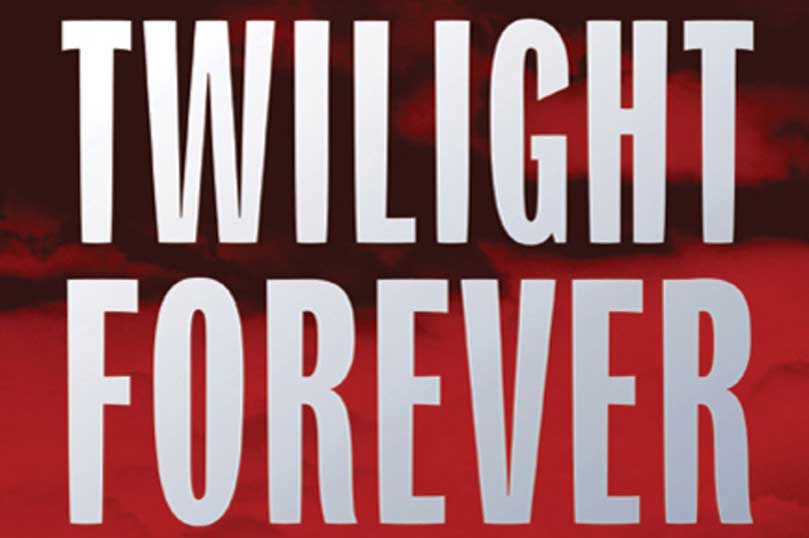 Six Questions for Russian author Lena Meydan
Six Questions for Russian author Lena Meydan
Q. In the US, Twilight Forever Rising is described as Underworld meets The Sopranos. How would you, as the author, describe the book?
Ans. This is a story about the relationships between vampires and humans, taking place in a huge metropolis where secrets are hidden in the darkness and shadows persist in the light. The everyday modern city is intertwined with the characters’ memories of the past to help illuminate the history of the existence of vampires and all that they represent.
Q. With this novel, you’ve created a complex and fascinating culture for your vampires. Tell us a little about what makes it unique.
Ans. When I conceived the book, I wanted to write a story of a man who accidentally touched the frightening and mystical world of vampires, who were secretly living according to the laws of their families and often feuding with each other. But as much as possible I also wanted to write about vampires as former human beings. I was interested in exploring how humanity may or may not still remain inside them and in looking at what they had lost forever.
This idea of mine has made the vampires in my book seem closely connected to humans. Twilight Forever Rising involves strong emotions; passion, hatred, love, lust for life, and yearning for self-expression.
Also, no one in the novel, man or vampire, knows the whole truth. In life we often do not know much, even if one person knows a little more than others. Time and history become distorted and we lose what was once the real picture. And with due diligence, any lie, after a few centuries, can become unshakable truth, especially when repeated to those who unconditionally believe you.
In this book, everyone is trying to get to the truth. Sometimes it is unpleasant and even more often it is deadly, even to the vampires.
Q. Love and sacrifice play a large thematic role, but never a melodramatic role, in the plot. How did you avoid cliché while writing a classic love story?
Ans- I wanted to show that love can be more than tearful melodrama and can also become the basis of a strong friendship, one that can make individuals capable of astonishing self-sacrifice.
Q.The vampires in this novel are fascinating and nuanced, especially Paula and Miklos. Was the dark and difficult relationship they share a conscious counterpoint to Darel and Lorraine, or did it just work out that way?
Ans- The whole structure of the book is based on the opposition not only of individuals or vampire families, but in the world itself. Humans and vampires: who is better? Who is more truthful? Who deserves to live in the city, and who should go?
Darel and Lorraine are representative of two forces in balance. The relationship between them is harmonious and open. It’s the bright side of relationships between men and women.
Then there are Paula and Miklos. They embody the dark side, the so-called relationship between predator and victim. One of the 18th century philosophers expressed a pessimistic view of all human relationships when he said that there are only two types of people: “predator” and “prey”. According to the theory, the predators will always oppress the prey through humiliation and manipulation. I do not believe that this is the only dynamic in the world, but the relationship between Paula and Miklos fits within these lines. However, how can a predator be sure that he’s really caught his prey? Is that person prey at all? After some time, the victim may suddenly fight back.
Q. You hint the Faryartos have turned many of the great artists and writers throughout human history into vampires, and you’ve hinted at the identity of a couple of them. Who else do you imagine they have turned?
Ans. One of the features of the world is that to get accepted into a certain vampire family, one must posses certain abilities. Each family has a criterion for selection. The Faryartos accept only artists. Some of the greatest creative minds in human history are in the clan: musicians, painters, poets, writers, actors, and more. I would not want to disclose their names in advance, but attentive readers will recognize these people in the book.
The Faryartos hold many secrets but most of the other vampire clans, to their misfortune, do not take the potential of Faryatos magic into account. It is difficult to understand how powerful human imagination can be. And, believe me, this theme plays a large role in Twilight Forever Rising.
Q. What was the main goal you hoped to achieve when you wrote this novel?
Ans. I wanted to look at the vampire with a new gaze. Look at them as people rather than predators, examine their history through the centuries, explore their complex social relationships with each other and, of course, their relationships with people. I wanted as much as possible to get away from the old horror trope of vampires wearing capes and sleeping in a black coffin and move the narrative to a modern city with neon-lit signs and street lights to brighten the night. Change the world around these creatures, and see if they remain monsters. Some of them still are.
Twilight Forever Rising by Lena Meydan will be available September 28, 2010.
…………………………
From the Tor/Forge September newsletter. Sign up to receive our newsletter via email.
…………………………
More from our September newsletter:
…………………………
Related Link:



























